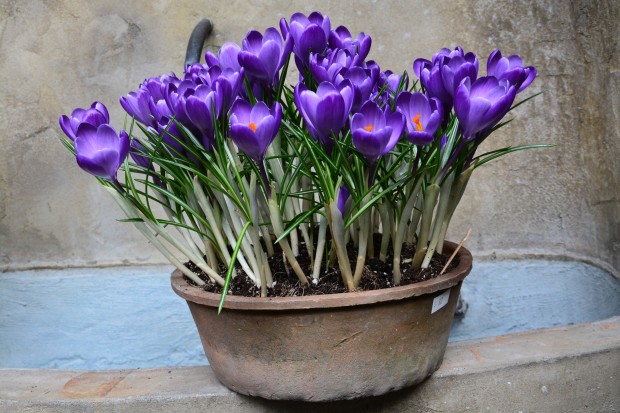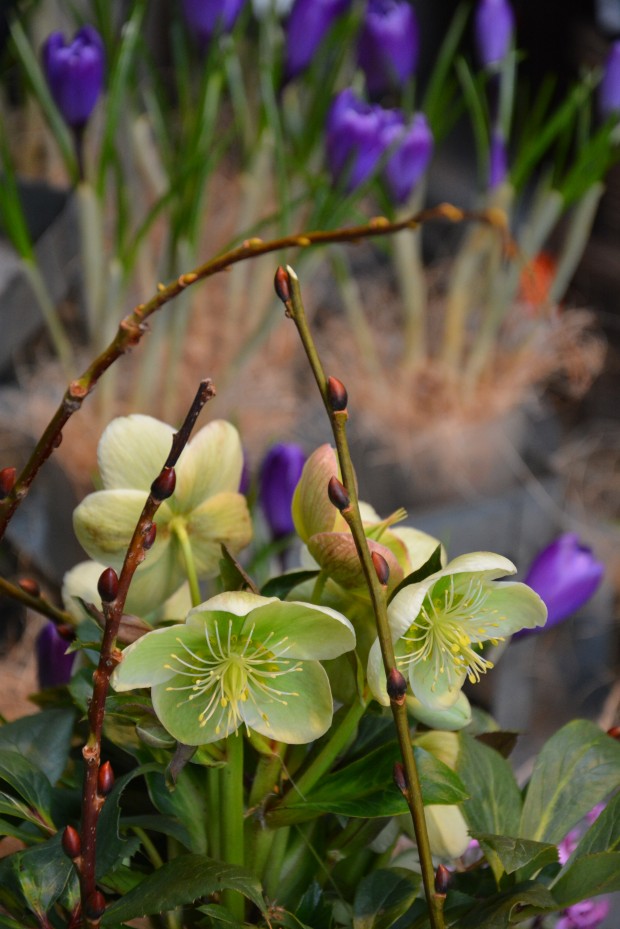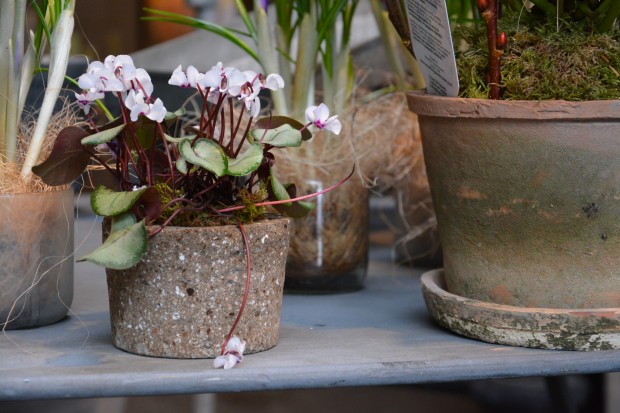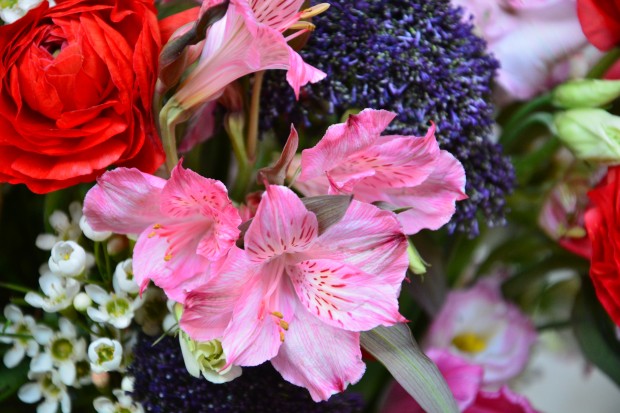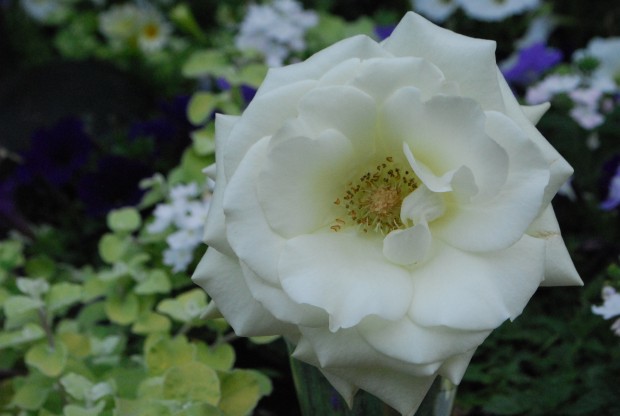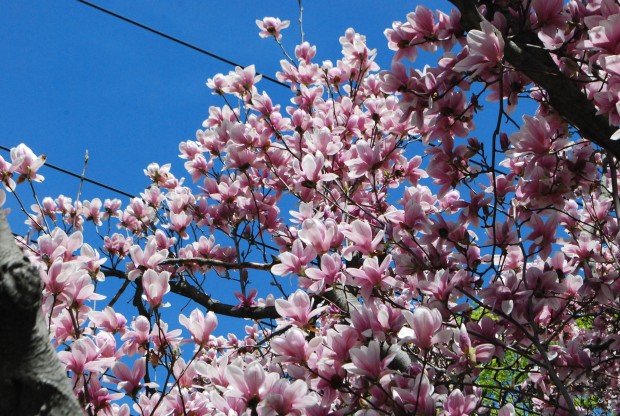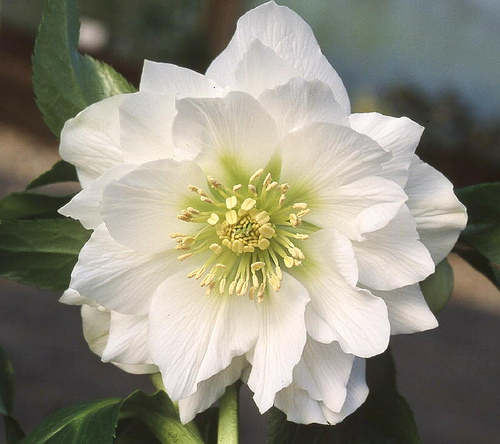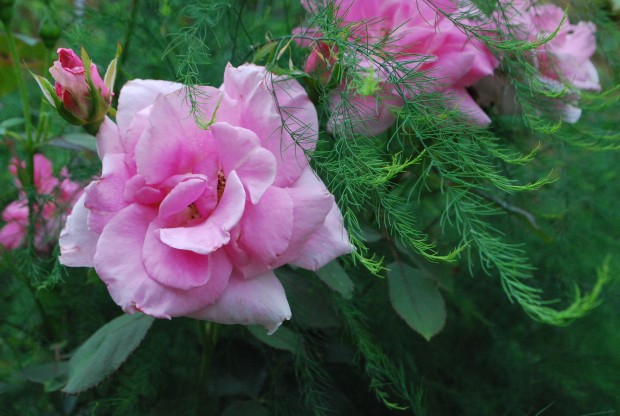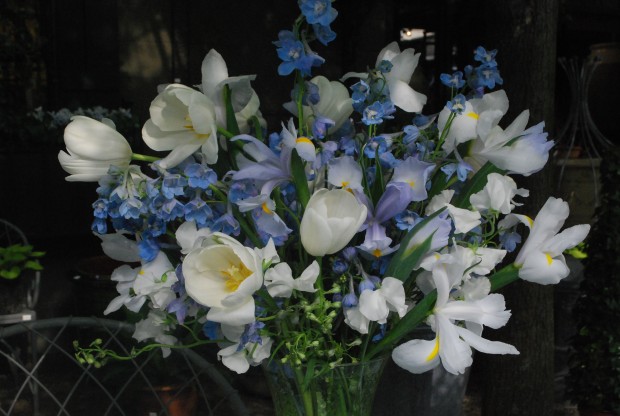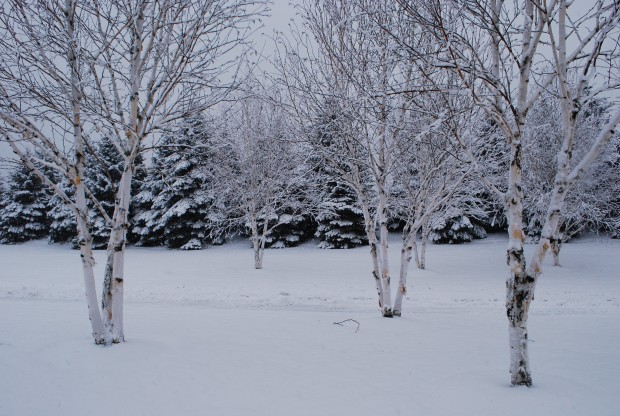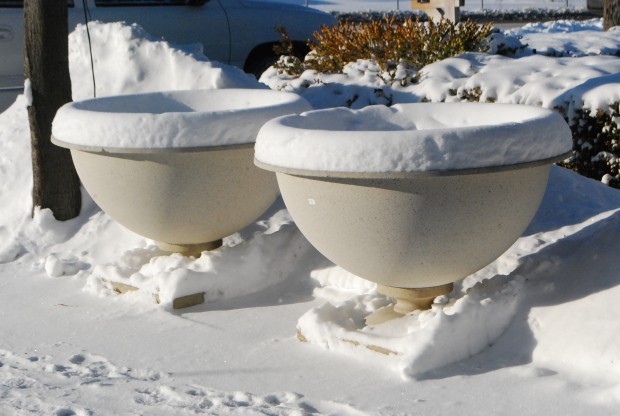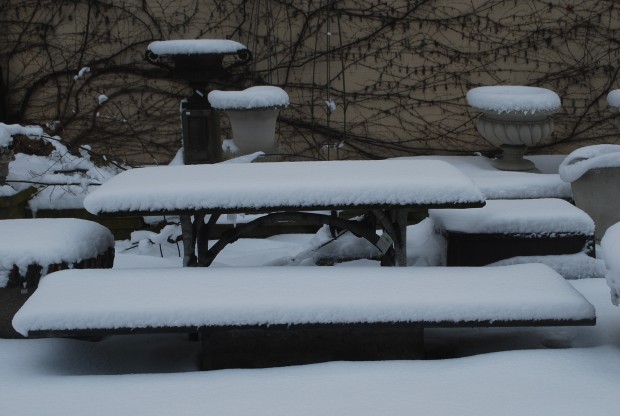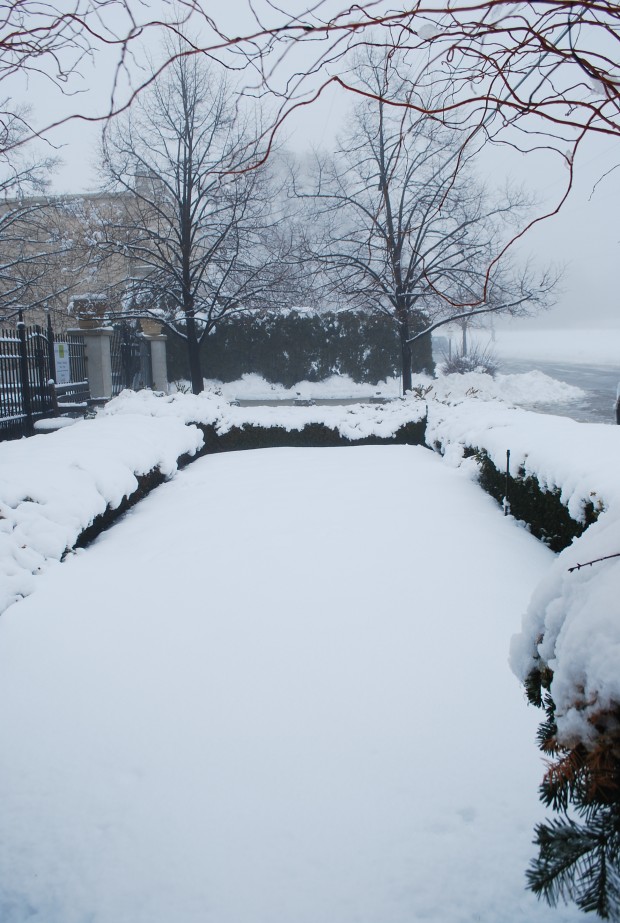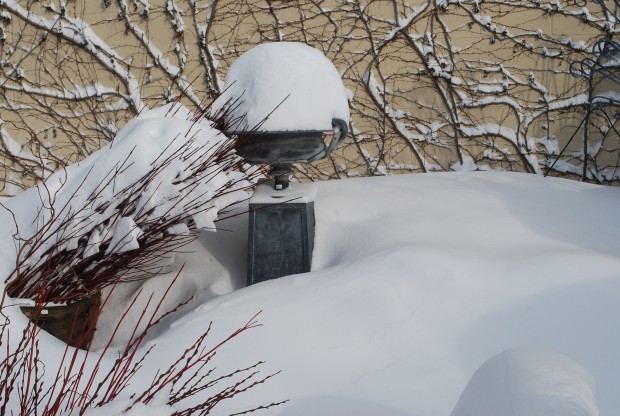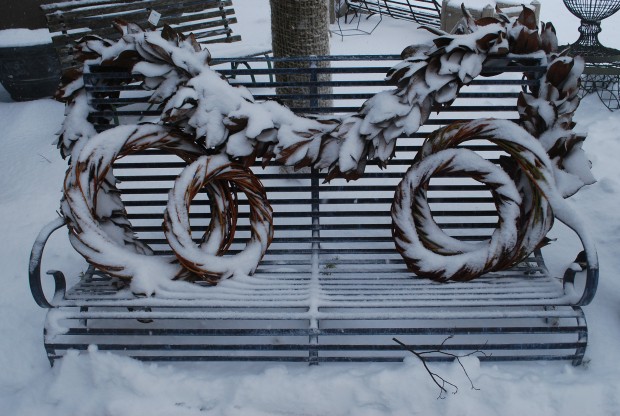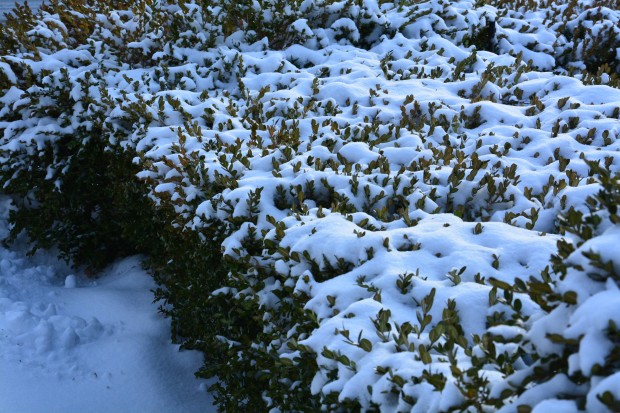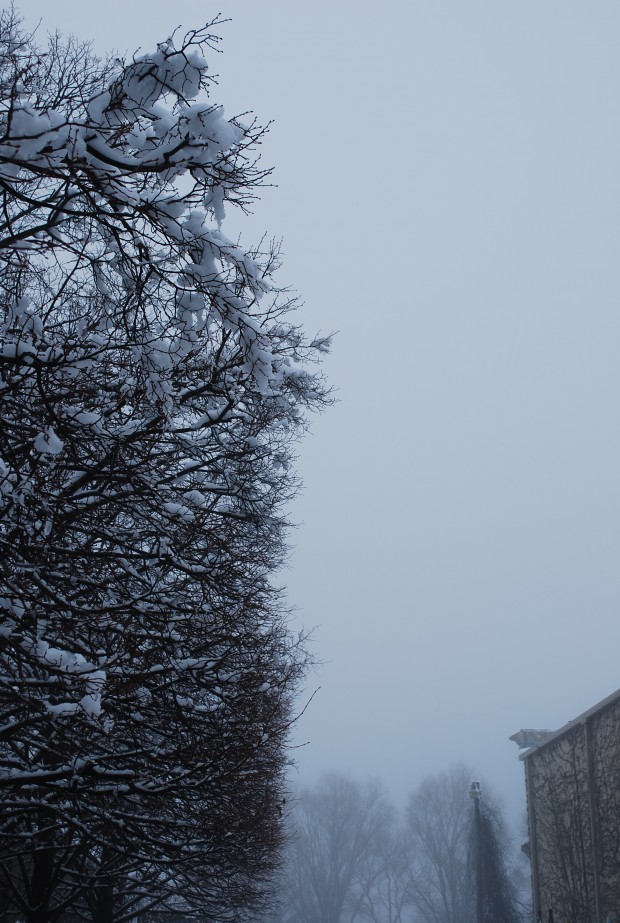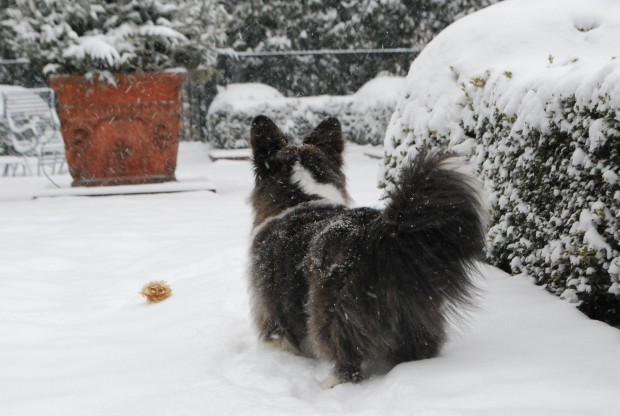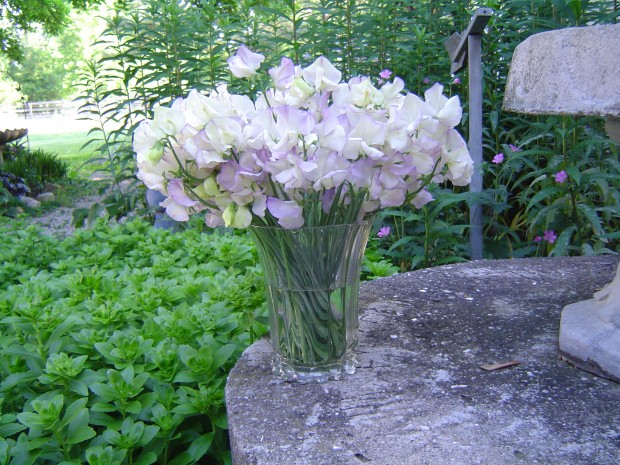 Could there be any fragrance more enchantingly reminiscent of spring than from the flowers of the sweet pea? “High Scent” is a cultivar of sweet pea known for its fresh and sweet scent. Sweet peas, indeed. The creamy white flowers are edged in pale lavender. Divine. Like edible peas, the plants are vining, and grow to 6 feet tall. They want the same cool conditions that all peas want. They will continue to grow and bloom as long as the nights are cool, and the days not too hot. Mulching helps to keep the root runs cool. Once the heat of the summer arrives, the edible and ornamental peas wane, and quit producing. Sweet peas is just one of many things that come to mind when I think of English gardens. The climate in England means the run of the annual sweet peas is a long run. Sweet peas are are difficult to grow in my area, unless we have a long cool spring. I usually buy them as cut flowers when they are in season. I have never tried to grow them. All the literature suggests that sweet pea failure in my zone would be predictable. Both this vase of high scent sweet peas, and the fabulous photograph is from The Gardener’s Workshop Flower Farm in Newport News, Virginia. If they can be grown in Virginia, might I not be able to grow them?
Could there be any fragrance more enchantingly reminiscent of spring than from the flowers of the sweet pea? “High Scent” is a cultivar of sweet pea known for its fresh and sweet scent. Sweet peas, indeed. The creamy white flowers are edged in pale lavender. Divine. Like edible peas, the plants are vining, and grow to 6 feet tall. They want the same cool conditions that all peas want. They will continue to grow and bloom as long as the nights are cool, and the days not too hot. Mulching helps to keep the root runs cool. Once the heat of the summer arrives, the edible and ornamental peas wane, and quit producing. Sweet peas is just one of many things that come to mind when I think of English gardens. The climate in England means the run of the annual sweet peas is a long run. Sweet peas are are difficult to grow in my area, unless we have a long cool spring. I usually buy them as cut flowers when they are in season. I have never tried to grow them. All the literature suggests that sweet pea failure in my zone would be predictable. Both this vase of high scent sweet peas, and the fabulous photograph is from The Gardener’s Workshop Flower Farm in Newport News, Virginia. If they can be grown in Virginia, might I not be able to grow them?
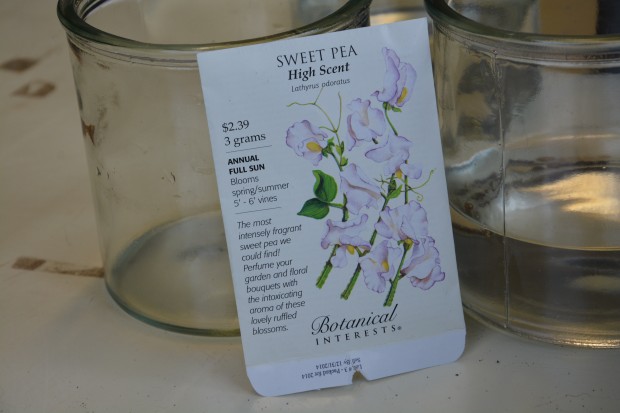 Why on earth am I thinking about sweet peas? This past weekend I had the pleasure of meeting and spending an hour with Fergus Garrett, head gardener and designer at Great Dixter in England. He was in town for the Spring Symposium arranged and given by the Master Gardeners of St Clair County. One of his hosts brought him by the shop. His favorite thing of all was an old perennial spade of mine that I have had for years that he found in the tool closet in the garage. Figures! I am thinking I should send that old spade to him. He also talked with Rob about English hurdles and hurdle makers. Malcolm Seal is a close personal friend of his, and anyone who goes to the gardening school at Great Dixter learns how to make sweet chestnut sheep’s hurdles. The hurdle talk, and the company of one of England’s most celebrated gardeners got me to thinking about sweet peas.
Why on earth am I thinking about sweet peas? This past weekend I had the pleasure of meeting and spending an hour with Fergus Garrett, head gardener and designer at Great Dixter in England. He was in town for the Spring Symposium arranged and given by the Master Gardeners of St Clair County. One of his hosts brought him by the shop. His favorite thing of all was an old perennial spade of mine that I have had for years that he found in the tool closet in the garage. Figures! I am thinking I should send that old spade to him. He also talked with Rob about English hurdles and hurdle makers. Malcolm Seal is a close personal friend of his, and anyone who goes to the gardening school at Great Dixter learns how to make sweet chestnut sheep’s hurdles. The hurdle talk, and the company of one of England’s most celebrated gardeners got me to thinking about sweet peas.
 Another pea reason-the state of our wintery spring. Marlene Uhlianuk who owns Uhlianuk Farms in Armada stopped by for our hellebore festival. She said the ice on Lake Huron near her was 3 feet thick in places. Too deep for ice fishermen to augur through. Her theory is that it will take a very long time for all that ice to melt. She wonders if the ice cover on the great lakes will cool air passing over, and influence our summer weather. As in a chilly summer. I am thinking about the possibility that a cold summer may follow a very cold winter. Well, if the summer will be cold, maybe I’ll be able to grow sweet peas. This is the optimist in me. The one seed in the above picture that did not swell-I pitched it. I doubt it will germinate.
Another pea reason-the state of our wintery spring. Marlene Uhlianuk who owns Uhlianuk Farms in Armada stopped by for our hellebore festival. She said the ice on Lake Huron near her was 3 feet thick in places. Too deep for ice fishermen to augur through. Her theory is that it will take a very long time for all that ice to melt. She wonders if the ice cover on the great lakes will cool air passing over, and influence our summer weather. As in a chilly summer. I am thinking about the possibility that a cold summer may follow a very cold winter. Well, if the summer will be cold, maybe I’ll be able to grow sweet peas. This is the optimist in me. The one seed in the above picture that did not swell-I pitched it. I doubt it will germinate.
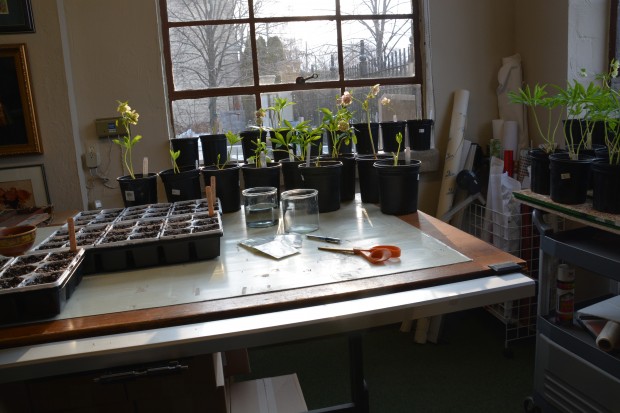 A third reason? It was 12 degrees here again today. Meaning that the we are still ice bound and snowed under. Any gardening would have to be conducted indoors. It only took a moment for me to forget about the winter, and concentrate on sowing my seeds. Seeds with hard seed coats benefit from a process called scarification. The hard coating can be abraded with a piece of sandpaper, so water can penetrate. Or you can soak the seeds. I soaked for 24 hours, and then set the seeds about an inch below the surface. I made sure that the soiless mix in my flats was thoroughly wet. This part takes a while. It may look wet on the top, and be bone dry in the middle. Once a seed has begun to germinate, it cannot dry out. Too dry conditions for even a short time can kill a developing seedling.
A third reason? It was 12 degrees here again today. Meaning that the we are still ice bound and snowed under. Any gardening would have to be conducted indoors. It only took a moment for me to forget about the winter, and concentrate on sowing my seeds. Seeds with hard seed coats benefit from a process called scarification. The hard coating can be abraded with a piece of sandpaper, so water can penetrate. Or you can soak the seeds. I soaked for 24 hours, and then set the seeds about an inch below the surface. I made sure that the soiless mix in my flats was thoroughly wet. This part takes a while. It may look wet on the top, and be bone dry in the middle. Once a seed has begun to germinate, it cannot dry out. Too dry conditions for even a short time can kill a developing seedling.
 Sweet peas can take 1 to 2 weeks to germinate. As I am sowing them rather late, I’ll keep the seed flats in a warmish place until they germinate. Then I’ll move them into the shop greenhouse-a cool place. Marlene thinks it unlikely that I will get flowers as I am starting seeds so late, but if the summer stays cool, who knows what could happen. At the worst, I will have entertained my winter weary self with a garden narrative.
Sweet peas can take 1 to 2 weeks to germinate. As I am sowing them rather late, I’ll keep the seed flats in a warmish place until they germinate. Then I’ll move them into the shop greenhouse-a cool place. Marlene thinks it unlikely that I will get flowers as I am starting seeds so late, but if the summer stays cool, who knows what could happen. At the worst, I will have entertained my winter weary self with a garden narrative.
 Now all there is to do is wait. Sweet peas are very slow to germinate. I have the time. The time it takes for these seeds to germinate will be vastly less than the time we have taken enduring the winter.
Now all there is to do is wait. Sweet peas are very slow to germinate. I have the time. The time it takes for these seeds to germinate will be vastly less than the time we have taken enduring the winter.
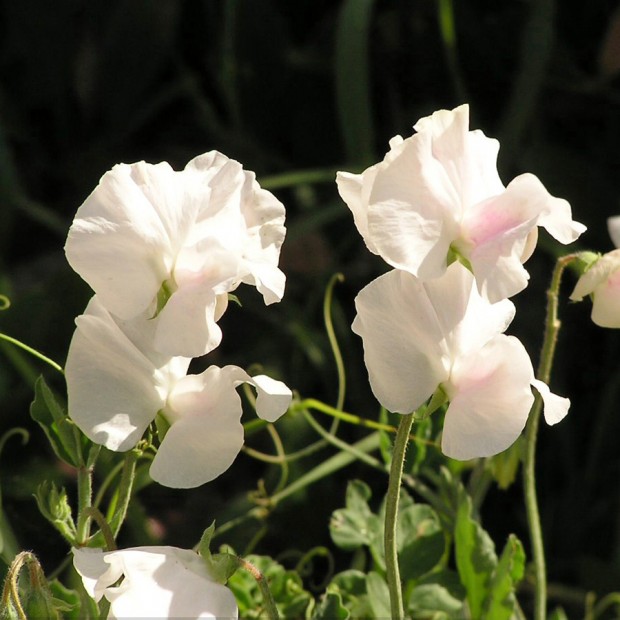 “White Elegance” is beautiful. It is not particularly fragrant. It is a day-neutral plant, meaning that it will bud and bloom regardless of the length of the day. I have a flat of these seeds sowed. “High Scent” is a long day flowering sweet pea, meaning the daylight hours need to be longer than the night time hours for flowering to be initiated. The seeds of this sweet pea, soaked and sown.
“White Elegance” is beautiful. It is not particularly fragrant. It is a day-neutral plant, meaning that it will bud and bloom regardless of the length of the day. I have a flat of these seeds sowed. “High Scent” is a long day flowering sweet pea, meaning the daylight hours need to be longer than the night time hours for flowering to be initiated. The seeds of this sweet pea, soaked and sown.
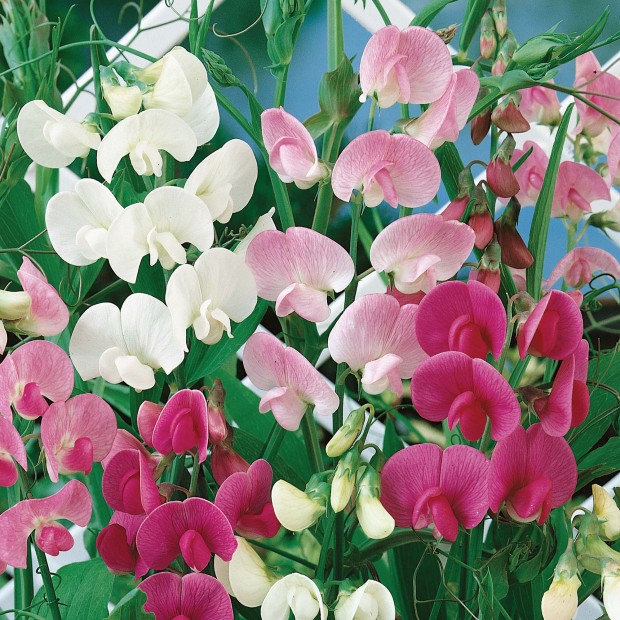 My third packet of seeds-the rambling and vining perennial sweet pea. Lathyrus Latifolius. Perennial sweet peas grow over on the property at the Branch studio. Who knows how they got there. I have seen them scrambling down wild embankments along the highways in Michigan. Blooming in shades of white pink and red, they are a cottage garden favorite where they have room to grow. This gorgeous illustration is from the website of Van Meuven. Who wouldn’t want to grow this plant? If I get any to grow lustily from my seed sowing, I may plant them on the fence at the Branch Studio. Any plant that represents in spite of the tough and unpredictable Michigan gardening conditions is worth a look. I planted some seeds today, in hopes of having a garden again soon.
My third packet of seeds-the rambling and vining perennial sweet pea. Lathyrus Latifolius. Perennial sweet peas grow over on the property at the Branch studio. Who knows how they got there. I have seen them scrambling down wild embankments along the highways in Michigan. Blooming in shades of white pink and red, they are a cottage garden favorite where they have room to grow. This gorgeous illustration is from the website of Van Meuven. Who wouldn’t want to grow this plant? If I get any to grow lustily from my seed sowing, I may plant them on the fence at the Branch Studio. Any plant that represents in spite of the tough and unpredictable Michigan gardening conditions is worth a look. I planted some seeds today, in hopes of having a garden again soon.
